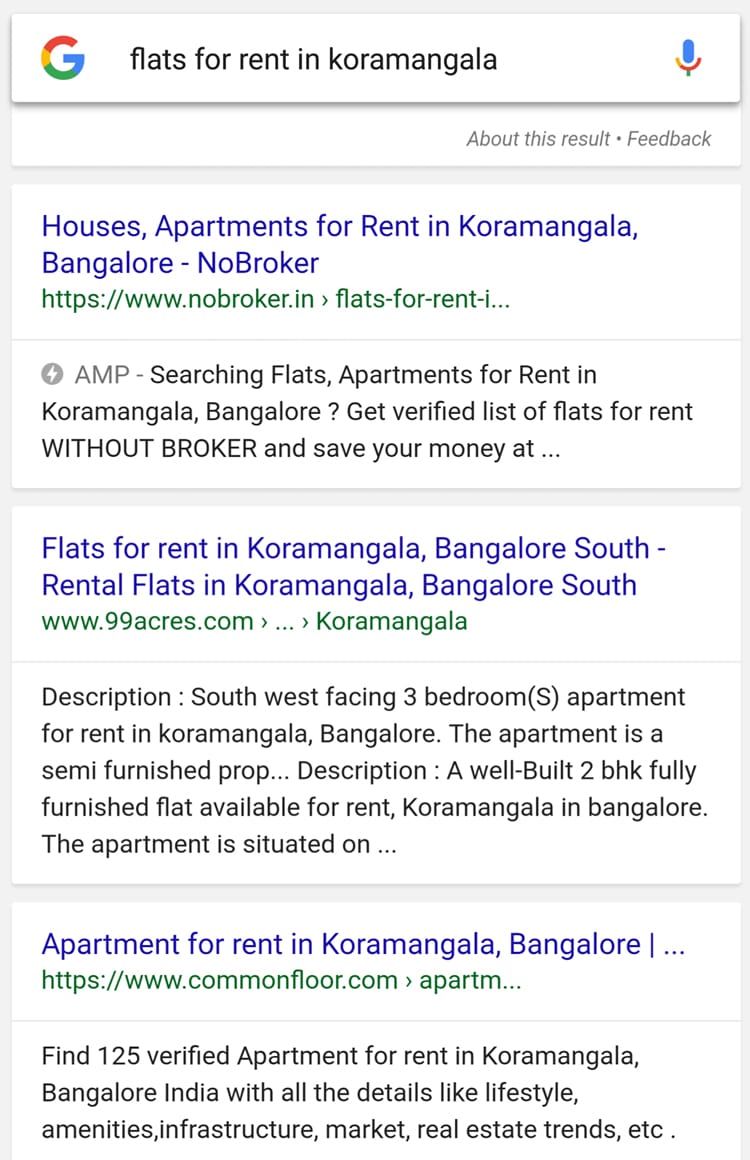MARCH 27, 2017
India’s leading rental site improved owner-to-renter connections by 77% with AMP

An online-only operation, Bangalore-based NoBroker connects flat owners and tenants directly by eliminating the broker/agent from the transaction. Despite tremendous growth, NoBroker’s leadership team was grappling with unreliable cellular networks and an increasingly mobile audience. “We were seeing more than 50% of site traffic coming from mobile phones,” explains Akhil Gupta, one of NoBroker’s founders. “But because of flaky Indian cellular service—often switching between 2G and 4G—our pages were taking 12 - 15 seconds to load on slower networks. The challenge was clear: We needed our pages to load faster, even if the network was shoddy.”
Solution
In looking for ways to overcome NoBroker’s page-speed challenge, Gupta learned about AMP while browsing Google for news. “Once I learned more, I knew it was something NoBroker needed to have,” he says.
Gupta applied what he learned about AMP, but with a twist. NoBroker needed to drive “connections” between renters and flat owners to drive more revenue. Their model converts to a paid subscription after nine connections. On average, it takes about 10 - 15 connections before a renter signs a lease. So the key for NoBroker was making renters aware of attractive properties. Unlike publishers, who apply AMP to static editorial content, NoBroker needed to dynamically update their AMP pages with available properties, while removing rented properties all in real time. To do this, NoBroker used the amp-live-list component to fetch new content and modify the last cached version of the page.
Results
NoBroker implemented their AMP framework in less than three weeks with just two engineers. “After our AMP pages went live,” Gupta says, “we saw an 18% decrease in bounce rate, 10% more page views, a 25% increase in registrations, and most importantly, a 77% increase in the number of connections between renters and tenants.”
Because NoBroker’s business model relies so much on the mobile experience, AMP is critical to the continued success of the business. “If you need to provide a super-fast experience to a mobile customer, then AMP is the easiest way to do it,” notes Gupta. “The best part is that it doesn’t require any changes to your existing site architecture, and it’s super-quick to implement.”